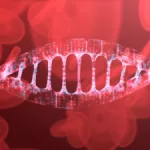In a gripping and enduring mystery, the Royal Newfoundland Constabulary (RNC) has finally made headway in identifying the enigmatic Conception Bay John Doe, a victim of a gruesome homicide. For the past 22 years, this unidentified individual has puzzled investigators. However, thanks to advancements in genetic genealogy, a significant breakthrough has been achieved, shedding light on the victim’s ethnic origin and potential connections. This article delves into the details of the case, the recent development, and the ongoing investigation that seeks justice for the victim.
The Discovery of Conception Bay John Doe
In May 2001, the severed head of an unidentified male was discovered by two individuals searching for tree saplings in Conception Bay, near St. John’s. The remains had been concealed within a Billy Boot shopping bag and buried in a dump site, presenting a grisly scene that would haunt investigators for over two decades. To this day, the victim has been referred to as Conception Bay John Doe.

A Breakthrough in Genetic Genealogy
With the case remaining unsolved for years, the RNC turned to genetic genealogy, a groundbreaking technique that utilizes DNA DNA, or Deoxyribonucleic Acid, is the genetic material found in cells, composed of a double helix structure. It serves as the genetic blueprint for all living organisms. Read Full Definition to trace family lineage. However, previous attempts to identify the victim using distant relatives proved futile. Then, in early 2024, a crucial breakthrough occurred when a man from the United States uploaded his DNA. He was John Doe’s first cousin, indicating a shared ancestry.
DNA, or Deoxyribonucleic Acid, is the genetic material found in cells, composed of a double helix structure. It serves as the genetic blueprint for all living organisms. Read Full Definition to trace family lineage. However, previous attempts to identify the victim using distant relatives proved futile. Then, in early 2024, a crucial breakthrough occurred when a man from the United States uploaded his DNA. He was John Doe’s first cousin, indicating a shared ancestry.
This revelation provided a crucial clue about the victim’s ethnic origin, as both the man and John Doe were found to have Cuban heritage. Const. Greg Davis, the lead investigator on the case, affirmed this significant finding. Further investigation confirmed the victim’s identity as Temistocle “Temi” Fernandez Casas, a Cuban national who arrived in Canada on a tourist visa in April 1992. There is no record of Casas traveling to Newfoundland, and it remains unclear how he ended up in the province
Unraveling the Identity
While progress has been made regarding the victim’s ancestry, several key details about Fernandez Casas’s life remain a mystery. The RNC believes that he was killed sometime between 1997 and 1998, but the exact cause of deathThe cause of death refers to the specific injury, disease, or underlying condition that directly leads to an individual's demise. It is a critical determination made by medical professionals, such as Medical Examiners or Coroners, Read Full Definition is being withheld to prevent jeopardizing the ongoing investigation. It is confirmed, however, that he was a victim of homicide.
Extensive Investigation Efforts
Over the past two decades, the RNC has diligently explored various avenues to solve the Conception Bay John Doe case. Their efforts have included media conferences, isotope analysis, submission of the victim’s DNA to national databases, and sharing dental records with authorities in the United States. Despite these exhaustive measures, identifying the victim had proven elusive until the recent genetic genealogy breakthrough.
Insights from Isotope Analysis
In 2007, the RNC conducted isotope analysis to gain insights into the victim’s life. This process involves examining chemical signatures in remains to determine the regions where an individual has lived. Through the analysis of teeth and hair samples, investigators were able to ascertain that Fernandez Casas likely resided in the southeastern United States between the ages of nine and 14. Additionally, the isotopes found in his hair suggested that he had been in Newfoundland and Labrador approximately 13 months before his death.
The Urgent Appeal and Reward
Const. Greg Davis, deeply invested in the case during his 11-year career, has passionately appealed to the public for assistance. With the victim’s identity now established, Davis encourages individuals who may have known Fernandez Casas or have information about his activities in Canada to come forward. To incentivize cooperation, the RNC has announced a $50,000 reward for information that leads to the resolution of the case.
Ongoing Investigation
With the identification of Fernandez Casas, the RNC is now focusing on reconstructing his movements leading up to his death. Investigators are particularly interested in locating a woman named Joanne Bergeron, believed to have worked as a travel agent in Cuba prior to April 1992. Bergeron is thought to have connections to Fernandez Casas and may provide valuable information regarding his activities in Canada.










